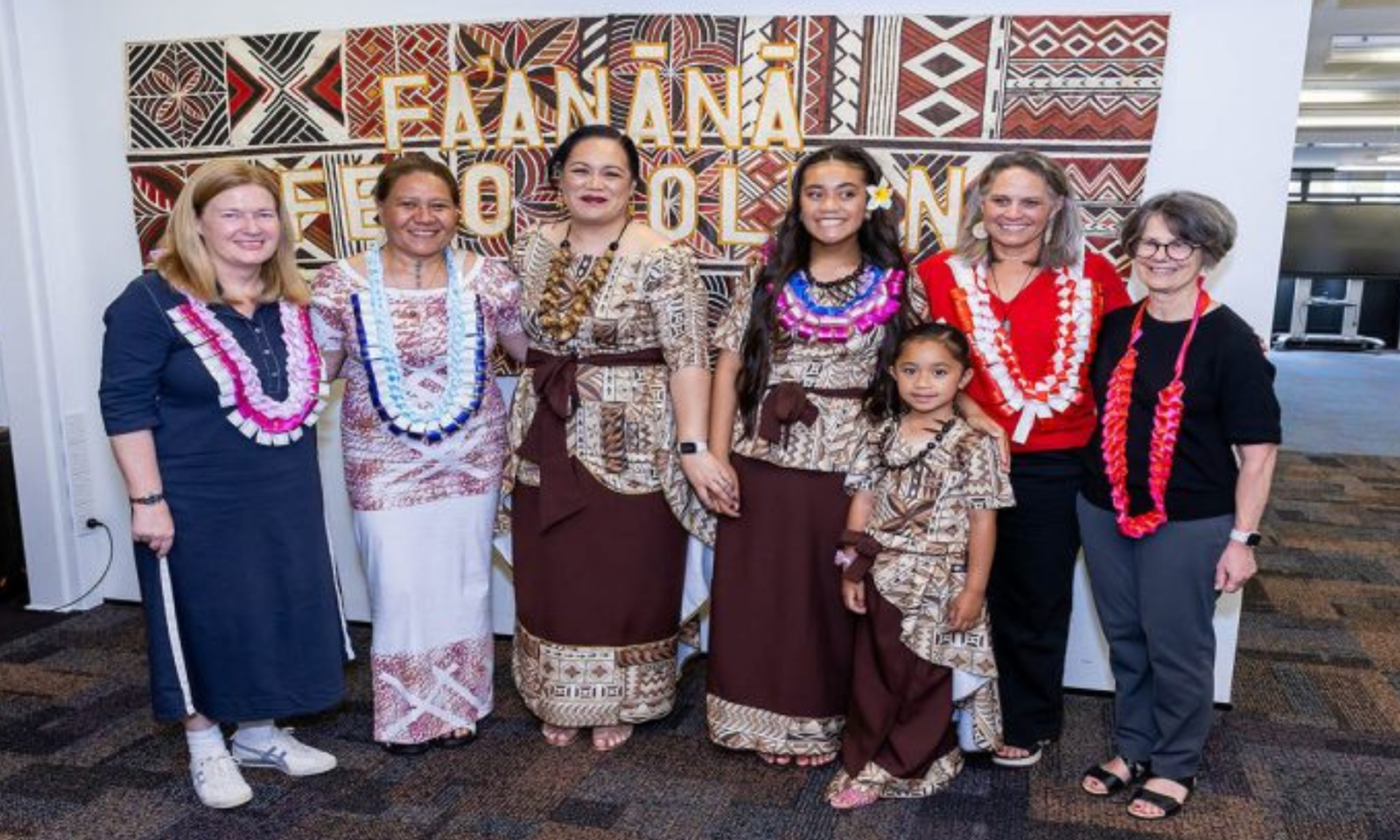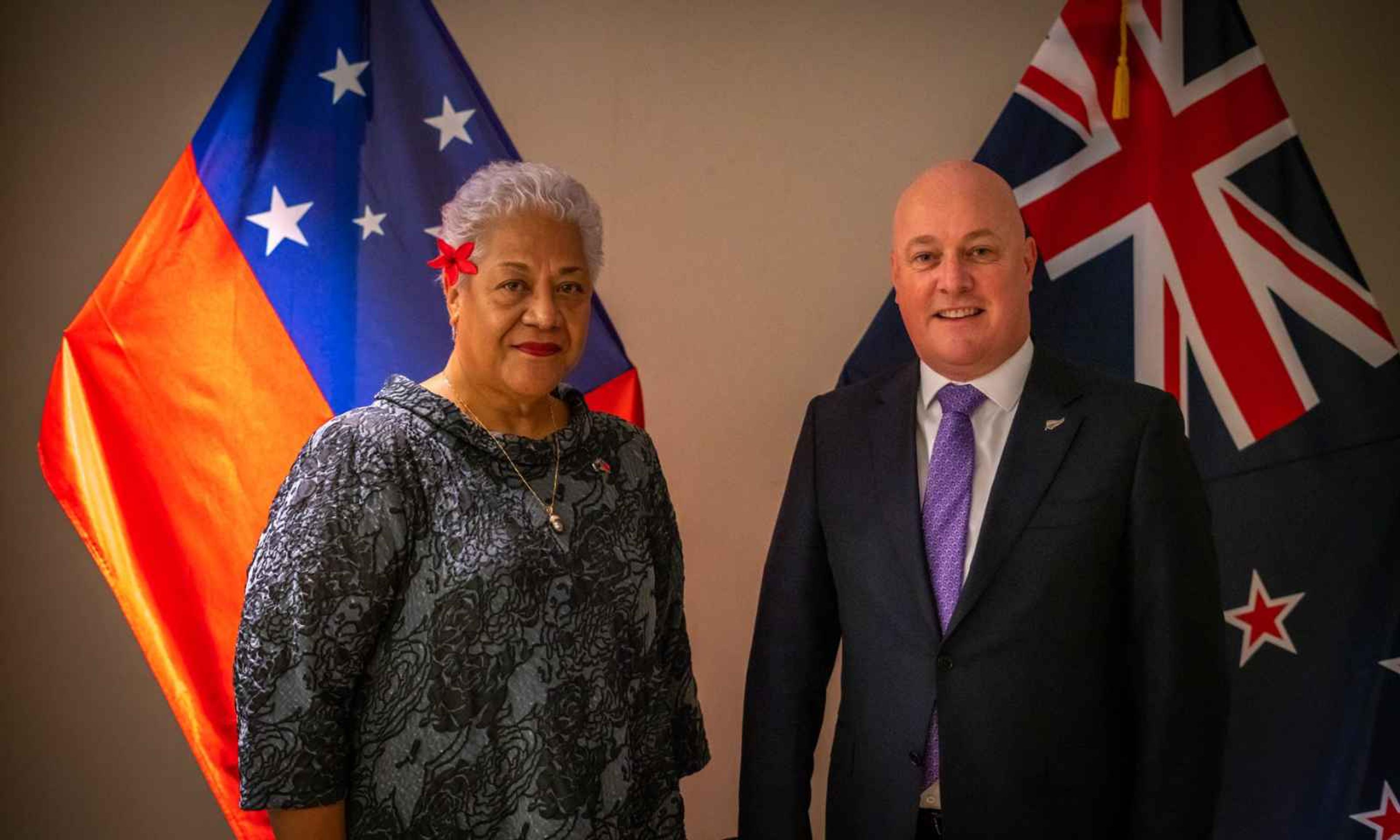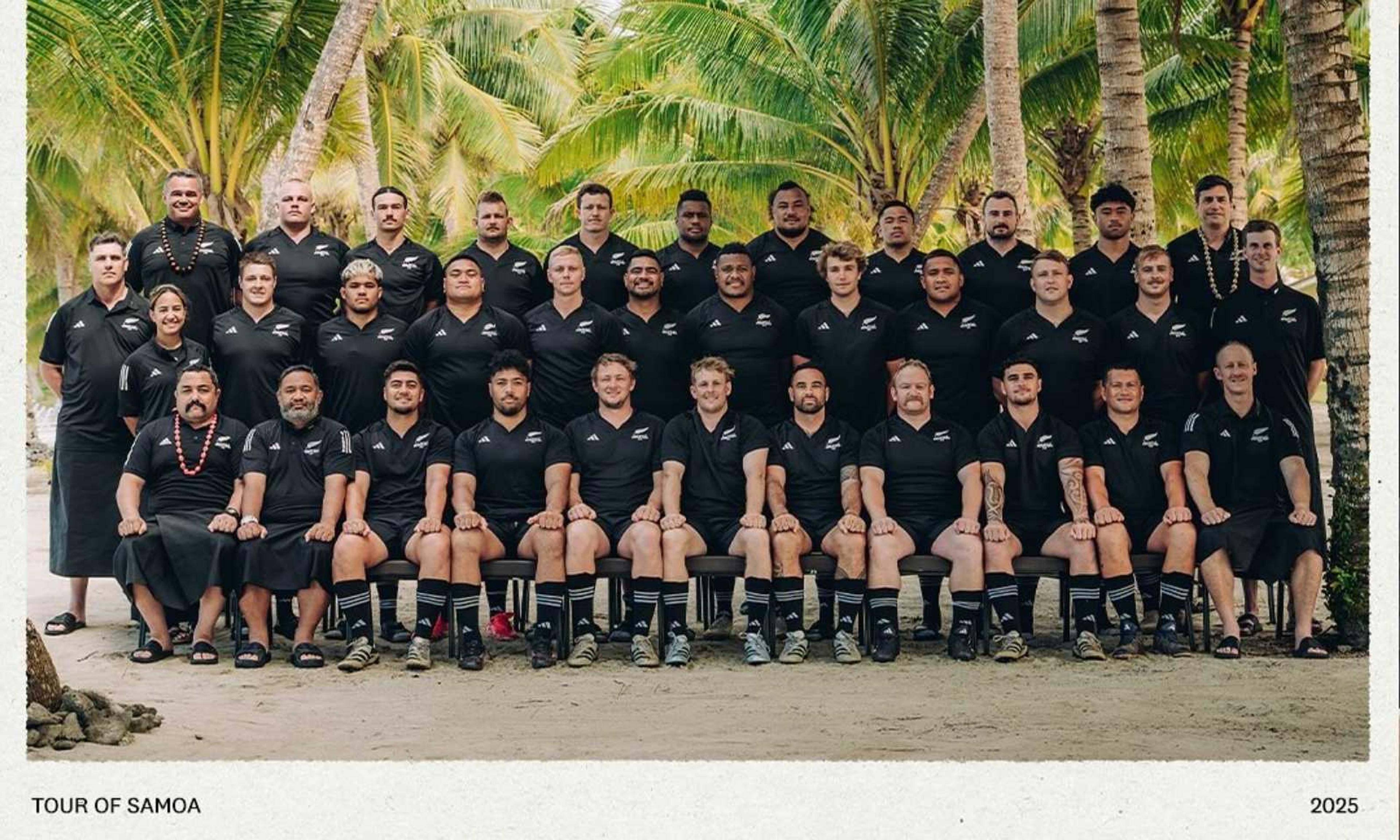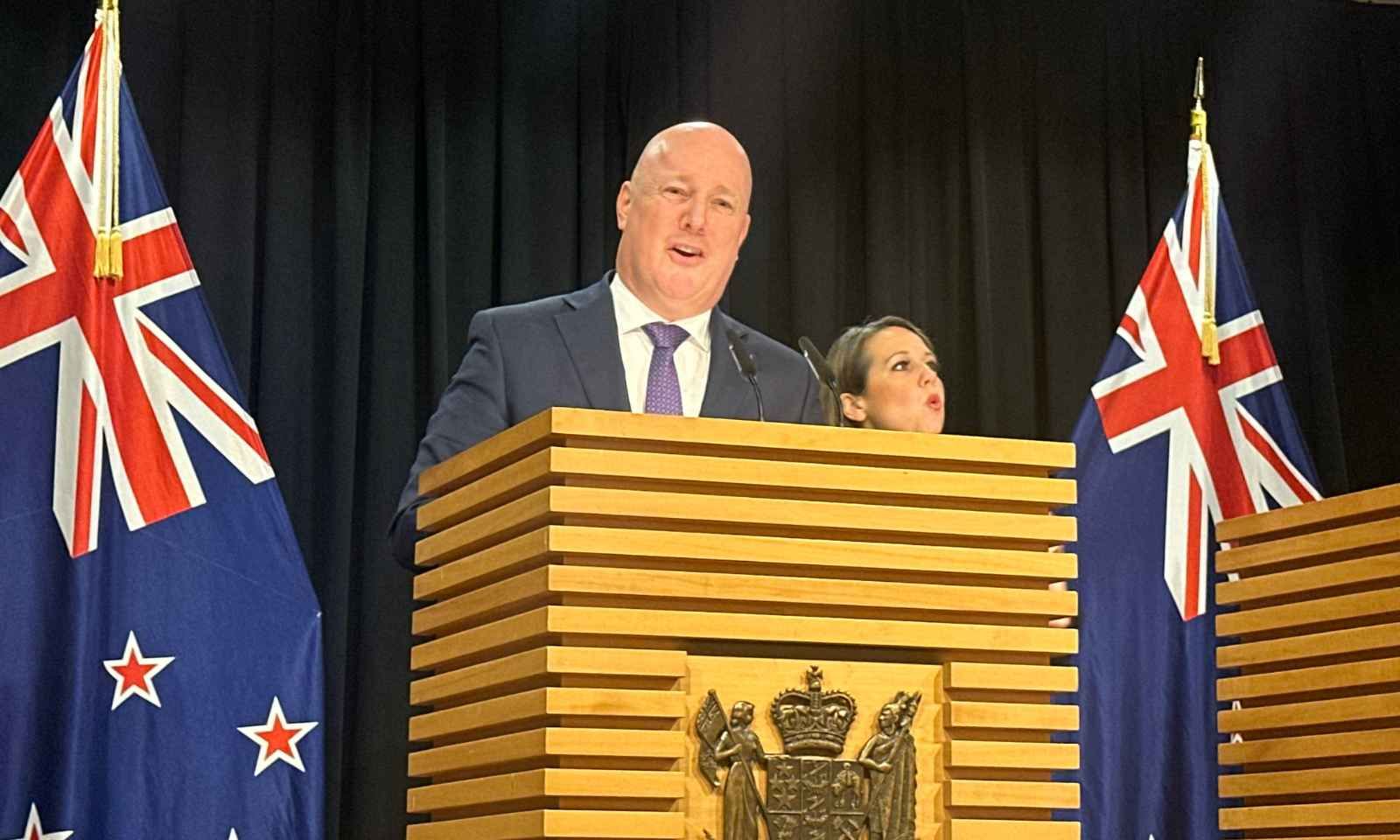

Former Prime Minister of Sāmoa, Fiamē Naomi Mataʻafa (left) and New Zealand Prime Minister Christopher Luxon.
Photo/Supplied
‘There wasn’t a negotiation’: PM on Manawanui payment
The Prime Minister says the $6 million payout for the sunken Manawanui vessel was made entirely on Sāmoa’s terms but locals warn the sum is too low.



Law expert: US boat strike controversy a lesson for the Pacific

Heartland XV coach reflects on emotional return to Sāmoa

Most New Zealand teachers set for six-figure pay after new deal struck with govt



Law expert: US boat strike controversy a lesson for the Pacific

Heartland XV coach reflects on emotional return to Sāmoa

Most New Zealand teachers set for six-figure pay after new deal struck with govt
Prime Minister Christopher Luxon defends his government's payment following the HMNZS Manawanui sinking but a Sāmoan community leader warns the sum is too small and key safety risks remain.
This week the New Zealand government confirmed it had made a $6 million (SAT$10m) payment to Sāmoa following the sinking and grounding of the Manawanui last year in October.
“There wasn’t a negotiation, we asked the Sāmoan government to come to us with what they thought would be appropriate,” Luxon says.
Luxon explains that the Sāmoan government will now decide how the payment will be distributed amongst the local communities affected by the incident.
But Sāmoan advocate, Ulugia Sua Jay Ah Fook Schuster says the figure announced was “on the lower side” given the impact.
In an interview with Pacific Mornings, says $10m would’ve been a better sum of money to ensure everything is safe.
“We in the village don’t know what’s actually going on in there,” Scheuster says.
“One of our other concerns is that now, there’s a lot of interest for divers… but at the moment, that boat’s not secured so it’s really unsafe.”
He goes on to explain that regardless of the danger, divers are still venturing into the wreck.

Prime Minister Christopher Luxon. Photo/PMN News/Ala Vailala
Beyond the payout, Schuster criticises how both governments handled the disaster’s aftermath.
He says mixed feelings remain across communities about whether the payout will reach those who need it most or help restore marine life.
“It took three or four months before anybody came over to actually start cleaning up… it was leaking for about three months.”
Watch Ulugia Sua Jay Ah Fook Schuster's full interview below.
He stresses the need for the incident to become a turning point for how environmental disasters are handled in Sāmoa and across the region.
Schuster gives credit to New Zealand for taking accountability and making significant efforts to address the issue.
“We're hoping that those funds go to the right places to try and recover our reef and our marine life on this side, that's our biggest livelihood.”
The vessel sank off the Safata District coastline on the south side of Upolu, Sāmoa; all 75 passengers and crew survived.
A comprehensive Court of Inquiry into the causes of the incident has been concluded and considerable work to implement the recommendations is underway.

HMNZS Manawanui provided the Navy with a modern and capable platform for diving and hydrographic specialists to embark and conduct specialised operations. Photo/Supplied
An inquiry summary released in April revealed shortcomings in the training and supervision of the crew and the Commanding Officer.
It was also revealed that the ship, which was in Sāmoa conducting hydrographic surveys of the reef ahead of the Commonwealth Heads of Government meeting, was not up for the job as neither the ship nor the crew were properly equipped.
Most recently, the New Zealand Defence Force (NZDF) advises that the investigation is reaching its closing stages.
Tourism operator Netina Malae, from Tafitoala, tells Sāmoa Observer that the damage caused by the incident will impact them for the rest of their lives and questions whether the payment sum is enough.
Watch local residents react to the payment sum below.
The vessel sank and burned in front of Malae’s home and says it’s caused her business and many others to come to a standstill.
“No one comes here anymore,” Malae says.
“All our bookings were cancelled, customers say they don’t want to come because the ocean is polluted.”
Peluaga Visesio Patea, village chief of Tafitoala - one of the communities affected by the sinking - tells Sāmoa Observer that the site of the wreck is a vital fishing ground for Safata, prized for its abundant fish and healthy coral reef.